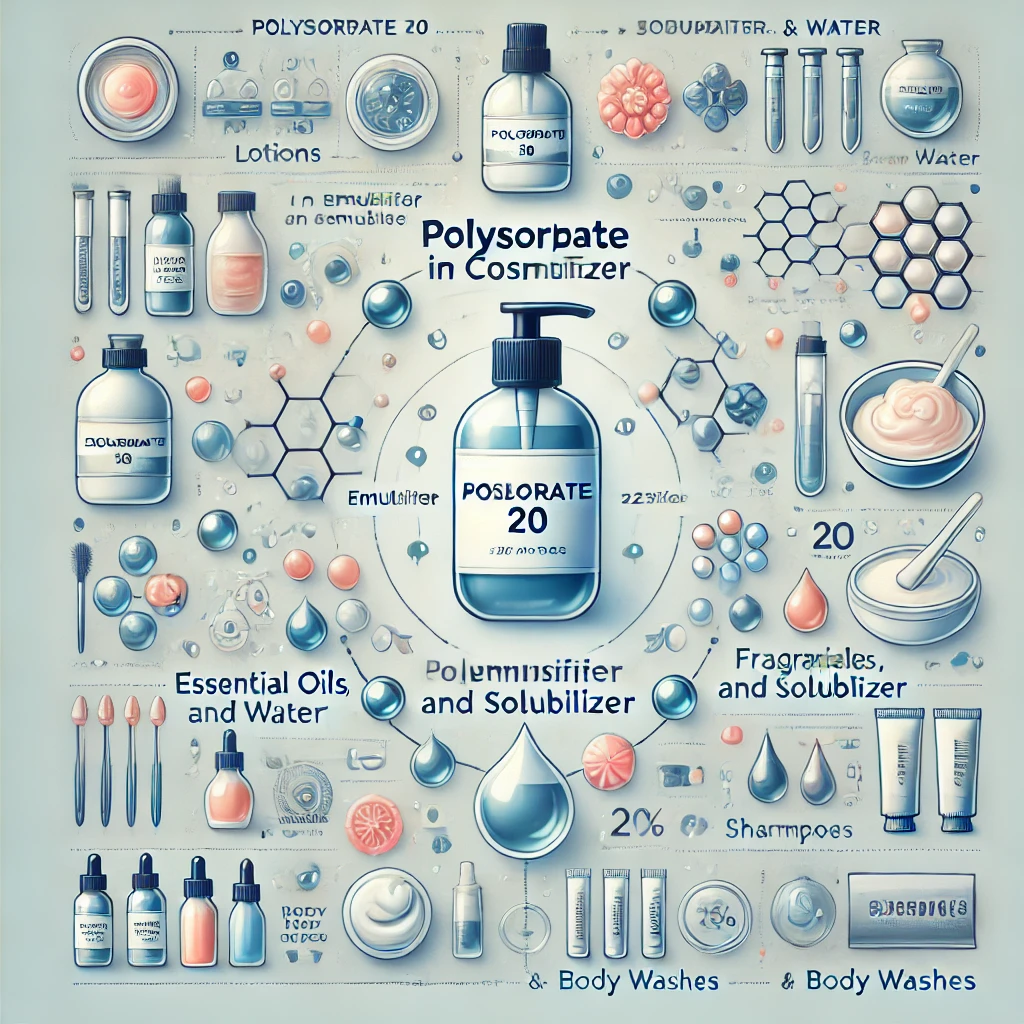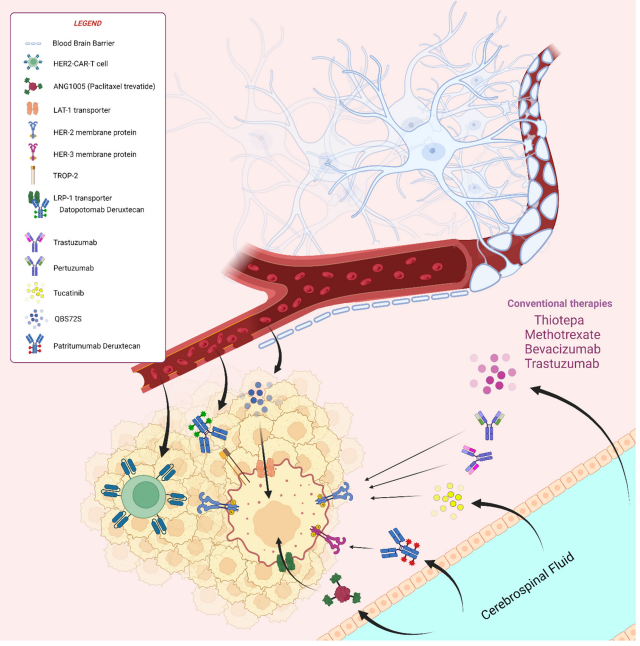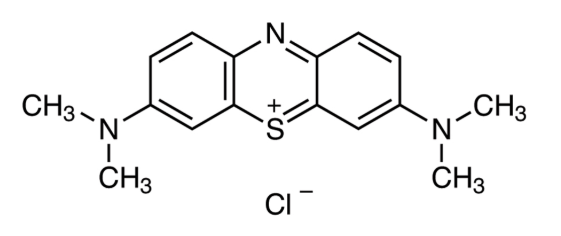What Is Papain? Exploring Its Diverse Applications in Food, Medicine, and Skincare
Abstract
Papain is a natural proteolytic enzyme extracted from the papaya plant (Carica papaya) that demonstrates powerful protein-degrading capabilities. Widely utilized across industries, papain plays a critical role in food processing, pharmaceuticals, cosmetics, and biotechnological research. In the food sector, it is valued for its meat tenderizing and beverage clarification properties, while in healthcare, it supports wound healing, digestion, and inflammation reduction. The cosmetic industry harnesses papain’s exfoliating action for gentle skincare formulations, and scientific laboratories use it for cell dissociation and protein analysis. As demand grows for plant-based, eco-friendly, and sustainable ingredients, papain continues to emerge as a multifunctional solution across both consumer and industrial applications. This article explores the diverse roles of papain, showcasing its broad utility and future potential in natural product innovation.
Introduction: Unveiling the Power of Papain
Papain is a natural proteolytic enzyme extracted from the latex of the papaya fruit (Carica papaya). For centuries, it has been used in traditional medicine and food preparation, but today, its applications have expanded across a wide range of modern industries—from food processing and pharmaceuticals to cosmetics and biotechnology.
What makes papain so special is its ability to break down complex proteins into smaller, more digestible components. This enzyme works under a broad range of pH and temperature conditions, making it highly versatile and stable for various industrial processes.
With the global trend toward natural, sustainable, and plant-based solutions, papain has gained popularity as a green alternative to synthetic chemicals in meat tenderization, skincare formulations, wound healing, and even laboratory research.
Whether you’re a food technologist, skincare innovator, health professional, or simply a curious consumer, understanding the wide-ranging applications of papain can reveal opportunities to enhance product performance and sustainability. In this article, we explore how this powerful enzyme from papaya is transforming industries with its multi-functional benefits.
What is Papain?
Papain is a cysteine protease enzyme found naturally in the unripe fruit of the papaya plant (Carica papaya). As a proteolytic enzyme, its primary function is to break down proteins into smaller peptides and amino acids, which makes it incredibly valuable for both digestive and industrial processes.
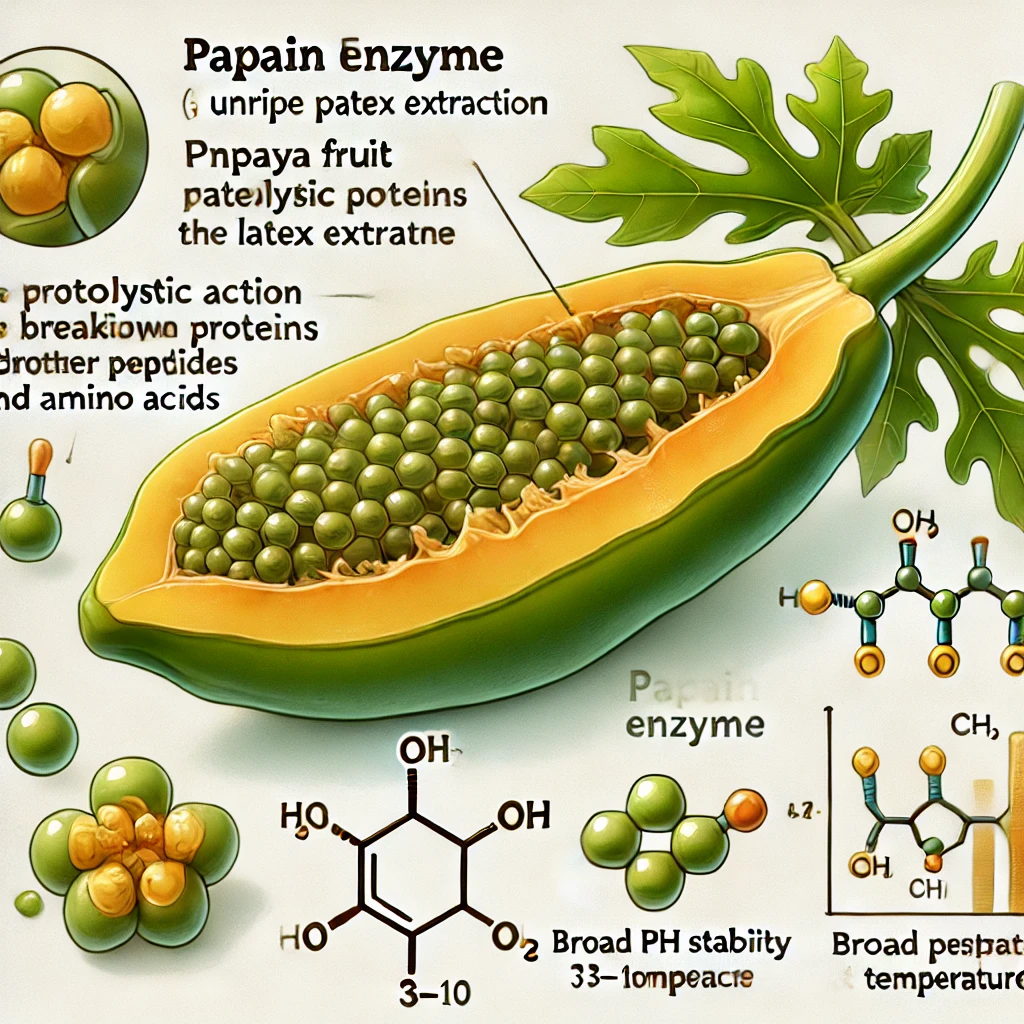
Structurally, papain belongs to the same family of enzymes as bromelain (from pineapple) and is characterized by an active site that uses a cysteine-histidine-asparagine triad to cleave peptide bonds. This enzymatic action works efficiently in a wide range of pH levels (3–10) and remains stable at moderate temperatures—making it ideal for many practical applications.
In nature, papain serves as a defense mechanism in papaya plants, helping protect the fruit from pests and pathogens. In laboratories and production facilities, it is usually extracted from the latex of green papaya fruit and processed into powder or liquid form.
With increasing interest in plant-based enzymes and clean-label ingredients, papain has emerged as a multi-industry solution for processes that require safe, efficient protein degradation—whether it’s to soften meat, clarify beverages, or develop enzyme-based medicines.
Papain in the Food Industry
In the food industry, papain has carved out a niche as a natural, effective enzyme that enhances product quality and efficiency. One of its most well-known uses is as a meat tenderizer. By breaking down tough muscle proteins and connective tissues, papain improves meat texture and palatability—especially for lower-grade cuts.
Beyond tenderizing, papain is also used in clarifying beverages. It helps prevent “chill haze” in beers and removes cloudiness from fruit juices by degrading protein particles that can cause turbidity. This leads to clearer, more visually appealing products without the need for artificial additives.
Another valuable use of papain in the food sector is in the production of protein hydrolysates for nutritional supplements and baby food. These hydrolysates are easier to digest and may reduce allergenic potential—making them ideal for sensitive populations.
As consumer demand rises for natural and clean-label products, papain offers a plant-based alternative to chemical processing aids. It’s biodegradable, safe, and has GRAS (Generally Recognized As Safe) status in many regions, making it a preferred choice for food technologists seeking sustainable solutions.
Whether used in industrial-scale food processing or home cooking, papain continues to prove its worth as a versatile enzyme in modern food science.
Pharmaceutical and Medical Applications of Papain
Papain has gained significant traction in the pharmaceutical and healthcare industries due to its anti-inflammatory, antimicrobial, and protein-degrading properties. Its ability to gently break down proteins makes it ideal for wound debridement—a process where dead or infected tissue is removed to promote faster, cleaner healing. Papain-based enzymatic ointments are widely used in burn care and chronic wound management, offering a non-invasive alternative to surgical intervention.
This versatile enzyme also supports digestive health, particularly in individuals with low stomach acid or enzyme deficiencies. Papain supplements are often marketed as natural digestive aids, helping to improve protein digestion, reduce bloating, and support overall gut function.
Furthermore, papain has shown promise in anti-inflammatory therapies, where it may help reduce swelling, joint pain, and muscle soreness. Some studies also suggest potential immunomodulatory effects, making it a subject of ongoing research in treating autoimmune and inflammatory diseases.
Because papain is plant-derived, biodegradable, and generally well-tolerated, it’s increasingly being incorporated into natural medicinal products. With its broad therapeutic potential, papain continues to bridge the gap between traditional herbal remedies and modern pharmaceutical science.
Cosmetic and Skincare Uses of Papain
Papain has become a rising star in the cosmetics and skincare industry, thanks to its natural exfoliating and cleansing properties. As a gentle protease, papain helps remove dead skin cells, dirt, and excess sebum from the skin’s surface without causing irritation, making it ideal for sensitive and acne-prone skin types.
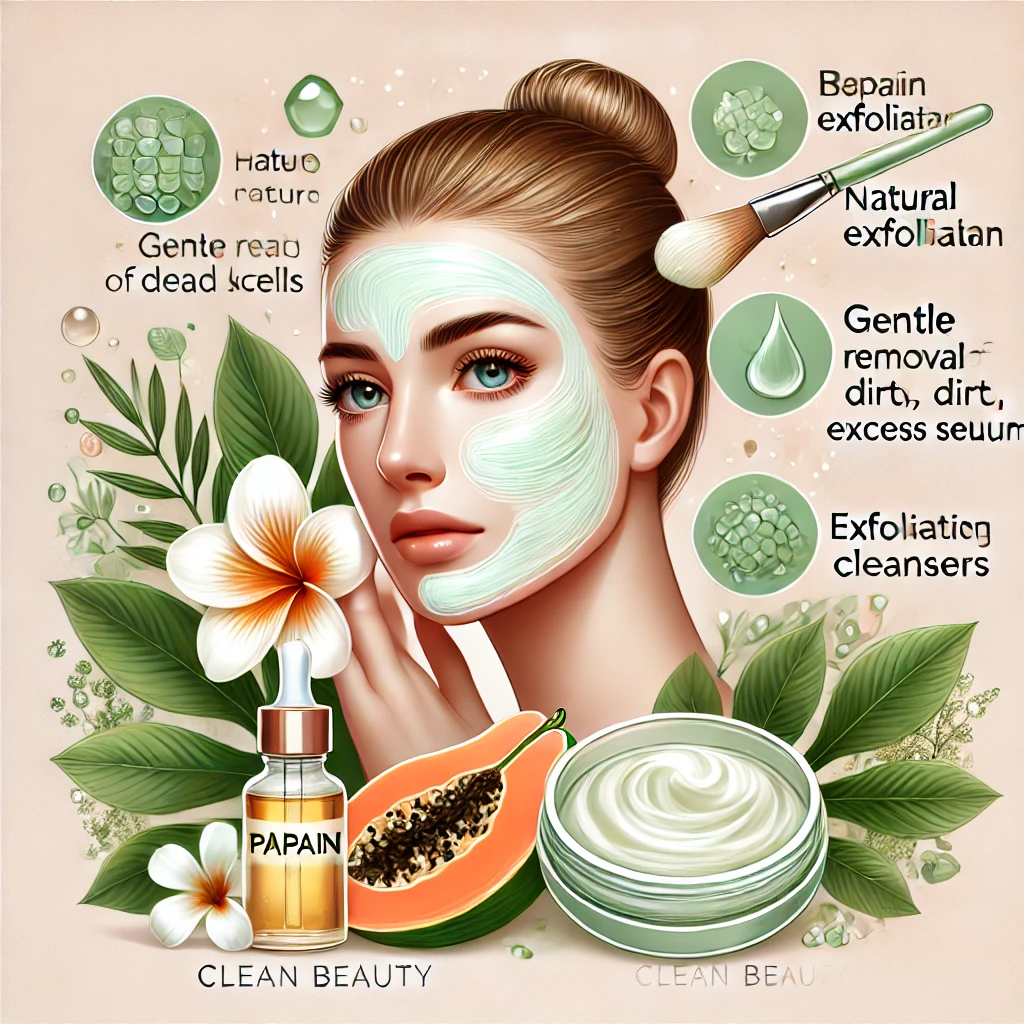
One of papain’s standout benefits is its role as a natural exfoliant. Unlike physical scrubs or harsh chemical peels, papain dissolves keratin proteins in the outer layer of the skin, leading to a smoother, brighter complexion. It’s commonly found in enzyme masks, exfoliating cleansers, and anti-acne formulations.
In addition, papain may help reduce hyperpigmentation, soften fine lines, and support wound healing—making it a popular ingredient in anti-aging and skin-repairing products. Its anti-inflammatory and antimicrobial effects further enhance its appeal in products targeting blemishes and redness.
As the demand for clean beauty continues to rise, papain offers a plant-based, cruelty-free alternative to synthetic skincare ingredients. Its compatibility with other natural actives makes it a flexible and effective solution in formulating modern, skin-friendly cosmetics.
Biotechnological & Research Applications of Papain
Beyond food and healthcare, papain plays a vital role in biotechnology and scientific research, particularly due to its ability to cleave proteins with high specificity and efficiency. One of its most common applications in laboratories is in tissue dissociation, where papain is used to gently break down extracellular matrices and isolate individual cells from tissues. This process is essential in cell culture, neuroscience research, and organotypic models.
Papain is also valuable in protein analysis and molecular biology, where it’s used to digest proteins into peptides for further study or purification. Its activity under a broad pH range makes it an ideal candidate for various lab protocols, including enzyme-linked immunosorbent assays (ELISAs), protein sequencing, and DNA extraction workflows.
Because it’s derived from natural sources and lacks the harshness of some synthetic enzymes, papain is favored in sensitive applications where maintaining cell viability or protein integrity is critical. Its use is also expanding into bioprocessing and drug development, especially in the creation of protein-based therapeutics.
With the ongoing evolution of bioengineering and pharmaceutical research, papain continues to be a reliable and eco-conscious enzymatic tool for scientists across disciplines.
Conclusion
Papain, derived from the papaya plant, is a remarkably versatile enzyme that continues to make a significant impact across numerous industries. Whether used in food processing, pharmaceuticals, cosmetics, or biotechnology, its ability to break down proteins efficiently has made it a sought-after ingredient and tool in both consumer products and scientific research.
In conclusion, the applications of papain are vast and varied, touching almost every aspect of modern life. Whether you’re consuming a papaya enzyme supplement, using a skincare product, or benefiting from biotechnological research, papain’s multifaceted capabilities are sure to continue influencing industries in a meaningful and sustainable way.
Reference
Choudhary R, Kaushik R, Chawla P, Manna S. Exploring the extraction, functional properties, and industrial applications of papain from Carica papaya. J Sci Food Agric. 2025 Feb;105(3):1533-1545. doi: 10.1002/jsfa.13776. Epub 2024 Jul 30. PMID: 39077990.
https://scijournals.onlinelibrary.wiley.com/doi/abs/10.1002/jsfa.13776
Sirirangsee P, Tagami J, Sanon K, Botta R, Ngernsutivorakul T, Kusumasari C, Hiraishi N, Shimada Y, Thongthai P. Deproteinization with Papain enzyme improves the bonding performance of self-etch adhesives to eroded dentin. Sci Rep. 2025 Mar 28;15(1):10825. doi: 10.1038/s41598-025-92975-w. PMID: 40155669; PMCID: PMC11953454.
https://www.nature.com/articles/s41598-025-92975-w
Voros A, Halmagyi TG, Saringer S, Hornok V, Szilagyi I. Papain functionalized Prussian blue nanozyme colloids of triple enzymatic function. Chem Commun (Camb). 2024 Nov 5;60(89):13032-13035. doi: 10.1039/d4cc04599h. PMID: 39431451.
https://pubs.rsc.org/en/content/articlehtml/2024/cc/d4cc04599h
Nogueira BL, Vieira FA, Grangeiro TB. Cysteine Peptidases of Calotropis procera (Apocynaceae): A Literature Review on their Biochemical Properties and Potential Applications. Curr Protein Pept Sci. 2024 Dec 24. doi: 10.2174/0113892037340497241024095749. Epub ahead of print. PMID: 39722486.

